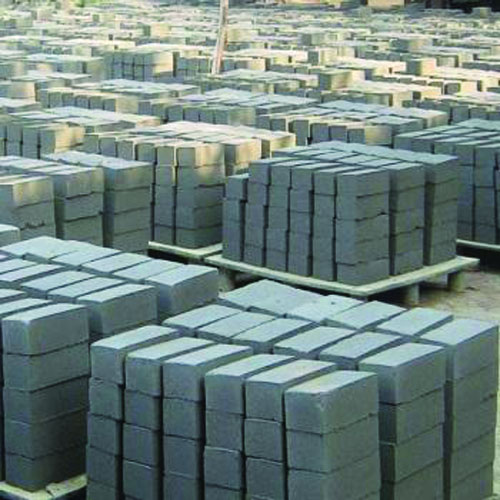Fly ash is inevitable while producing thermal power. However, leaving it to pollute the environment is not desirable
Fly ash, a by-product of coal-fired electricity-generating power plants, has always been a predominant challenge for the environment, as its unsafe disposal or ineffective recycling can pose a direct threat to the quality of the air we breathe. Such is our dependence on thermal power plants for energy that apart from the air pollution caused by these behemoths, the fly ash is also compromising other aspects of our environment.
For instance, the breach of the fly ash dyke at the Vindhyachal NTPC Super Thermal Power Station in Singrauli district of Madhya Pradesh in October 2019 led to the seeping of nearly 35 lakh metric tonnes of fly ash into the Govind Vallabh Pant Sagar, popularly known as the Rihand water reservoir. The Essar power plant at Mahan in the same district, too, saw breaches in its fly ash dykes leading to its seepage into the environment.
The huge level of water pollution triggered by the seepage of fly ash into the Rihand reservoir raised a red flag and the National Green Tribunal (NGT) imposed an interim penalty of Rs 10 crore on the NTPC and Essar after reviewing the ground report filed by its committee. Additionally, the NGT also rapped the Lanco-Anpara power plant to stem the excess ash pond flow into the reservoir. The fly ash caused soil pollution, too, due to which agricultural land became infertile and standing crops suffered.
Thanks to the fly ash pollution, the levels of mercury in the soil, air and water spiked besides causing health complications for local communities as the Rihand reservoir is a source of drinking water for many. All these adverse developments took place despite the existence of statutory notifications from the Ministry of Environment, Forests and Climate Change (MoEFCC) under the Environment Protection Act (EPA) that mandates a 100 per cent utilisation of fly ash.
However, the full extent of the damage caused by the fly ash pond breach has come to light now thanks to a new report submitted recently by the joint committee comprising the Central Pollution Control Board (CPCB) and the Indian Institute of Technology (IIT), Roorkee. The report estimated that the fly ash breach by Essar Power Limited caused damages worth Rs 7.35 crore while the damage inflicted by the fly ash dyke breach at the NTPC plant was pegged at a whopping Rs 104 crore. The committee based its damage estimations on two parameters: One was the Green House Gas (GHG) emissions caused by the clean-up operations and two the extent of water pollution due to ash overflow.
The use of diesel during the clean-up operations caused the carbon footprint to spike, leading to the damage estimation spiking as well. Similarly, the fly ash infusion into the water bodies led to heavy metals and suspended solids leaching into the water. This, too, was translated into cost and added to the damages.
Thermal power stations are still the mainstay of our power sector with renewable sources of energy being nowhere near the required potential to take over as primary sources of our needs. Moreover, the opening up of the coal sector for mining to private players, besides nixing of the mandatory coal-washing requirements, is set to increase the production of fly ash in the future.
Already the ash ponds are overflowing across the nation due to increasing output and decreasing utilisation. As a result, the dykes are frequently breaking, leading to the ash polluting the nearby fields and water bodies.
The last 10 years saw the ash ponds contain a humongous 627 million tonnes of unused material. This is three times the fly ash being generated per year today, which is 200 million tonnes per annum. The close of 2019 saw an unused fly ash stock quantity of 1,647 million tonnes in India, which is eight times the annual generation quantity.
This is despite the fact that India has the regulations in place that mandate 100 per cent usage of fly ash and there is technology available to put this into action. Yet we are still far from a “full utilisation status.”
The Government-driven initiative to promote the use of fly ash in the construction material industry has not been a spectacular success as red bricks continue to be sold and used in open violation of the Government’s rules that ban them. Bricks are made out of top soil which is a precious part of our environment. An inch of top soil takes 500,000 years to form as it essentially involves the breaking down and erosion of rock.
If the Government cannot shut the countless red brick kilns that can be seen dotting the countryside, it cannot promote the use of fly ash in the building material industry. The buyer will have no option but to continue with the traditional red brick, which is easily available. Once the red brick production and supply chain is broken, it will not only save the top soil but also stem the pollution caused by these kilns as they use diesel and sugarcane waste as fuel.
Fly ash can be successfully used to produce bricks in combination with gypsum or lime. The resultant brick is not only eco-friendly but lighter and stronger. Technologies are available today that use compressed natural gas (CNG), an eco-friendly fuel, to fire autoclaves or huge ovens to manufacture fly ash bricks. Each autoclave can manufacture 22,000 fly ash-lime bricks in an eight-hour span.
So, if the thermal power plants in the country were mandated with a target to produce a certain quantity of bricks using the autoclave technology, then the problem of excess fly ash would disappear. There are ways to ensure full utilisation of fly ash; only a strong political will is required to implement the rules that have been put in place for this.
(The writer is an environmental journalist)


























